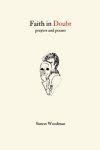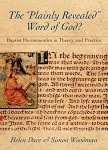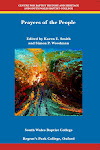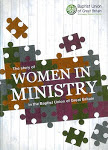Sermon preached at Bloomsbury Central Baptist Church, 28 July 2019
Revelation 14.1-5, 14-20
Listen to this sermon here https://soundcloud.com/bloomsbury-1/apocalypse-now-6-heavens-perspective-on-mercy-and-judgement
There are two related issues
which I want us to think about this morning,
and they can be expressed as two questions:
firstly the question of whether the reign of evil on the earth will ever end,
and secondly that of whether a life of suffering and faithful witness
is ultimately worthwhile.
In these two problems are reflected two desires which I suspect many of us can relate to:
the desire for the overthrow of evil,
and the desire for mercy towards sinners.
On the face of it, these two desires can seem to be mutually contradictory.
After all, if God is to be merciful to those who have sinned,
how can he simultaneously punish them for their sinfulness?
This contradiction is explored within the Jewish tradition in the book of Jonah,
with Jonah famously frustrated
when God shows mercy to the sinful inhabitants of Ninevah. (Jonah 4.1–3, 11)
And it is this tension between mercy and judgment
that John explores in chapter 14 of the book of Revelation.
John’s original readers, those in the seven churches of Asia Minor,
were hopefully, by this point in their engagement with his book,
becoming convinced by the repeated assertions
that the empire of Rome is actually a satanic beast
deceiving the nations of the earth,
and drawing idolatrous worship away from the one true God.
But as the scales fell from their eyes as to the true, beastly nature of the empire,
their temptation would have been for them
to desire nothing less than its total destruction,
along with all who continue to be associated with it.
And it’s always tempting, isn’t it,
for those of us who long for a new world,
for a brighter better future,
to also long for the destruction
of the systems of oppression,
and to work for their replacement
with new, better, more just ways of governing society?
The temptation is always before us
to seek the overthrow of the existing evil empire,
and its replacement with an empire of our own devising.
This might be a religiously motivated temptation,
but it doesn’t have to be:
There has never been any shortage of people
offering an ideological panacea for human woes,
and whether it’s the elysian fields of a no-deal Brexit,
or the utopia of greater European integration,
or the communitarian economics of Socialism,
or the self correcting justice of the free market,
or the paradise of a truly Christian country…
the temptation to see one ideology as the solution to all our problems,
is every bit as much before us in our world,
as it was before the first century Christians of Asia Minor.
Do away with the empire!
Down with Rome!
Long live King Jesus!
Vive la révolution of the Kingdom of God.
However, this attitude of pitting the Church against the world,
where the world is bad, and the church is good,
can also lead, at the opposite end of the scale, to an attitude of isolationism;
where the Church’s task becomes that of remaining pure
while the rest of the world ‘justifiably’ goes to hell.
We can see this in those forms of Christianity
that emphasise moral and doctrinal purity,
but which disengage from action on justice
in order to keep themselves holy.
And it is in order to avoid both of these extremes,
revolution and isolation,
that John wants those in his congregations
to understand the importance
of their role as a light to all nations.
By John’s understanding, the central task of the faithful Church
is that of bearing faithful witness,
even if it means persecution and martyrdom,
and this core task cannot be set aside
either in the interests of isolationist purity,
nor violent revolution.
And John achieves this balancing act
by holding together two images:
one of judgment, and one of mercy.
So before describing the judgement of the satanic empire,
John addresses the issue of God’s mercy towards sinners.
And he begins with an image of the Church,
depicted in both its heavenly and earthly manifestations:
The church in heaven, the church universal,
is depicted as the twenty-four elders worshipping before God’s throne (14.3);
And the church on earth, the church militant
is depicted as a great crowd numbering 144,000. (14.1,4).
John then hears the song that is being sung in heaven,
and it turns out that on the earth
it is only the 144,000 who are able to learn it. (14.2–3).
Let’s spend a few minutes now getting to grips with this strange image
of the church on earth as 144,000 male virgins.
It’s pretty weird, isn’t it?
Apart from anything else, at the time of the writing of Revelation,
there were nowhere near this number of Christians in the world!
We first met the 144,000 in chapter seven,
and if you remember our sermon from a few weeks ago,
we discovered that they’re one of the images John uses for the church on the earth.
They come into view again here at the beginning of Chapter 14,
where they appear as the army of the Lamb,
standing with him on Mount Zion.
This image of the Church on earth,
arrayed behind the Lamb as a mighty army prepared for battle,
is offering John’s readers heaven’s perspective
on their experience of themselves as members of small, struggling churches.
They might experience their present circumstances
as a time of failure and difficulty,
with small numbers of believers struggling to remain faithful to their Lord
in the face of overwhelming opposition from the Empire of Rome
But in John’s vision, the church are already a great force,
on the brink of victory over the very forces that would seek to crush them (14.1).
And the sound of heavenly worship is heard echoing over the battlefield (14.2),
with 144,000 the only people on the earth
whoa are able learn this new song of heaven (14.3; cf. 5.9–10).
The worship offered in the seven churches
may not have always have resounded with the echo of divine harpists,
but from heaven’s perspective the worship of the Church,
the faithful naming of Jesus as Lord
in place of all other claims to power and authority,
is the only way in which the world gets to hear
they joyful song of the victory of ultimate good over evil.
And there’s a message here for us here, I think.
Our worship at Bloomsbury can sometimes seem heavenly,
particularly, from my point of view,
when Philip literally pulls out all the stops
as we sing one of the great hymns of the faith.
But even when it isn’t, even when we don’t know or don’t like the song,
even when we mumble through, or disengage,
we are still naming Jesus as Lord,
we are still proclaiming that all other powers are not Lord,
and from heaven’s perspective this proclamation is not lost,
it is taken up into the eternal song of which it is but an echo,
the song that the church sings in all places and all ages, and in all languages,
as the accompaniment to the ultimate defeat of evil,
and the final victory of good.
The content of this ‘new song’ of heaven is revealed
by the fact that the 144,000 are twice described
as the ‘redeemed’ in verses 3 and 4:
they are those whose salvation
has been purchased by the blood of the lamb,
to use the old phrase.
Humans are rescued from the power of sin and death
by the redeeming death of Jesus.
Interestingly, the only other occurrence of the word ‘redeemed’ in Revelation
is found in the context of another ‘new song’
that sung by the four living creatures and the twenty-four elders
in chapter 5.8–10,
where praise is once again directed to the Lamb
who has ransomed the saints for God by his shed blood.
Only the Church, it seems,
can sing of the victory won by Jesus on the cross.
The only way the good news of Jesus is made known on the earth,
is when the followers of the lamb join their voices
and proclaim it in song and action to a world
that would otherwise remain deaf and blind to the path to new life
that has been opened for all by the death of Jesus on the cross.
The Church of the redeemed on the earth, symbolised by the 144,000,
is then described in the next verse as being the ‘first fruits’ (14.4),
recalling the Jewish practice of offering the first fruits of the harvest to God
as an indication that the greater harvest also belongs to God (Ex. 23.16–19).
And this gives us an image of the Church, the 144,000,
taking the path of sacrifice
and enduring through tribulation,
not for their own salvation and benefit,
but for the greater benefit of all those who will follow:
they are the first fruits, of a greater harvest which is still to come.
The strange description of the 144,000 as those
‘who have not defiled themselves with women, for they are virgins’ (14.4)
has attracted an undue level of speculation and interpretative ingenuity:
it’s a problematic image, because it seems to exclude women,
and also because it has idealised male celibacy as a characteristic of holiness.
To understand John’s use of this image
we need to understand both his Jewish background, and his theological point.
He is wanting to portray the Church as priests before God (1.6; 5.10; 20.6).
And in the Levitical law, the act of sexual intercourse was regarded
as rendering both partners ritually unclean for the next day (Lev. 15.18),
which meant that Jewish priests were required to abstain from sexual relations
before entering a period of priestly service in the temple.
In John’s image, the Church is seen as ritually pure
– not just through a temporary abstinence from behaviour that would defile,
but pure in an eternal and absolute sense
as befits his later image of the church as the bride of the Lamb (19.7; 21.9f.).
His point is that the church can be the priests of the whole earth,
because the church is pure, washed clean by the blood of the Lamb,
and dressed in white robes indicative of this purity (7.14; cf. 3.5, 18).
The church on the earth, the 144,000, are not only the first fruits of the great harvest,
but are also the pure and undefiled priests of the earth,
singing the song of heaven
which enables all those beyond the church to draw near to God.
With regard to the male virginity side of this image,
it is also likely that John has in mind here the Jewish practice
of soldiers ensuring they were ritually pure before a battle (e.g. 1 Sam. 21.4–5),
Intriguingly, this tradition of celibacy before a battle is still current even in the UK:
with a BBC survey reporting that
‘More than a third of male football fans
abstain from sex the night before a big match’.
And those of you with long memories
may remember that Berti Vogts, the German football manager in 1994,
banned his players from seeing their Wives and Girlfriends
on the night before a match.
So this image of the 144,000 as the army of the Lamb,
is an image of the church, ritually pure and ready to fight:
‘Match ready’, so to speak.
And their purity is emphasized even more by the statement in the next verse
that ‘in their mouth no lie was found; they are blameless’ (14.5).
This is a reference to the suffering servant passage from Isaiah,
who is ‘like a lamb that is led to the slaughter’ (Isa. 53.7).
Early Christians came to understand this as referring to Jesus,
and in Isaiah, the suffering servant is declared innocent after his death
with the phrase, ‘there was no deceit in his mouth’ (Isa. 53.9).
In John’s scheme in Revelation,
the innocence of the slain Lamb Jesus is passed on
to all those redeemed by his shed blood;
and the purity of the suffering servant (Isa. 53.11)
becomes the purity of his servants, who endure through suffering.
The 144,000 pop up a couple of times more in Revelation,
as an image of the church on the earth,
blazing the trail to heaven which the nations of the earth can then follow:
John depicts them again as the army of the Lamb in chapter 15 (v2-4)
where once again they are singing,
this time as they stand beside the sea of glass and fire,
echoing the story of the Israelites standing beside the Red Sea
having come out of slavery in Egypt (Ex. 15.1f.).
The song offered here by the 144,000 is described by John
as the song of Moses and of the Lamb,
and this parallel makes it clear that he sees the Church as being at the forefront
of a process of a new exodus.
They have passed through the waters (of baptism, rather than the Red Sea),
they are no longer under the tyranny of the beast,
whether that be Egypt, Rome, or Satan,
and they are embarking on their journey to the new promised land,
the new Jerusalem,
led on the journey and in song not by Moses, but by the Lamb.
The 144,000 then appear again in chapter 19 as the army of heaven,
assembled behind the rider on the white horse
at the final battle of Armageddon.
They are still dressed in their white linen clothes
but by chapter 19 they are also riding white horses (19.14).
The beast and the kings of the earth
gather to make war on the rider and his army (19.19),
but the army of heaven have no need to participate in this battle:
their fight against the forces of evil in the world is already over
for the forces of the beast have been defeated
by the rider on the white horse.
Ultimately the battle against evil is won,
not by the efforts of the Lamb’s army,
but through the truth of the gospel
as it comes from the mouth of Christ himself (19.21).
Those who have ‘conquered’ are victorious through their faithful witness
to the one who conquers.
In all of this, John is emphasizing the inherent difference
between those in the Church,
and those who are still embroiled in Babylon.
The vital function of the Church
is that it alone of all the inhabitants of the earth
can learn the song of heaven and sing it to the earth.
This is a picture of the witnessing Church, and the message is clear:
if the Church fails to sing the new song,
then the song will remain in heaven.
However, if the Church picks up the heavenly refrain,
the glory of heaven is brought to the earth.
Once again in Revelation, then,
worship is seen as both a spiritual and a political activity,
proclaiming the kingdom of Christ on the earth
in place of the idolatrous claims of empire;
drawing the nations of the earth
from Babylon to the new Jerusalem.
An angelic messenger then confirms this perspective,
echoing the witness of the Church
by proclaiming an ‘eternal gospel’
to ‘every nation and tribe and language and people’ (14.6),
calling all people to repent and give God glory (14.7).
John then sets before his audience two harvest images,
the harvest of grain (14.14–16) and the harvest of grapes (14.17–20).
The Old Testament background for these images
is found in the two harvests referred to in the book of Joel:
‘Put in the sickle, for the harvest is ripe.
Go in, tread, for the wine press is full.’ (Joel 3.13).
The grain harvest, as John presents it, is a positive image,
representing the ingathering of the entire earth (14.16).
In this image is found the end goal
of the faithful witnessing of the people of God,
as all peoples are harvested by Jesus himself (14.14).
Just as in Chapter 7 the 144,000 became the great multitude (7.4, 9),
so here in Chapter 14 they become the great harvest.
We have seen how John describes the 144,000
as the ‘first fruits’ of a greater harvest (14.4),
Well, here in the image of the Grain Harvest,
we get to see what that harvest looks like,
and it looks like a farmer gathering in all the grain from his field.
There may be an echo here of the parable Jesus told,
with wheat and the weeds growing together and being harvested together,
before the weeds are cast into the fire to be burned,
but where that parable was about the weeds and the wheat
that grow together in a person’s life,
and indicates God’s mercy in freeing us from sin and evil
by casting them into the fire;
the harvest image in Revelation is more universal and less individual in scope:
it depicts the harvesting of the whole earth,
and makes no mention of either weeds or fire.
What John is showing here is that the faithful witness of the Church
results in the salvation of all the nations of the earth,
as the Abrahamic covenant is fulfilled,
and God’s people become a blessing for every nation
So, to return to one of John’s key questions:
is it worth persevering in witnessing
even through difficulty and persecution?
Yes, says John, it is!
The scholar Richard Bauckham says that
[The people of God] are to participate in Christ’s victory
by bearing witness, as he did, as far as death
in [the] great conflict with the idolatrous power of the Roman Empire.
In this way, they will witness to all the nations
and bring them [all] to repentance and faith in the true God.
However, this positive harvest image
is then followed immediately by a more negative counterpart,
in the form of the image of the grape harvest.
In this image, John addresses his other question,
that concerning the desire for judgement on evil in the world.
The grapes are harvested by an angel (14.19),
placed in a winepress, and trampled by Jesus (cf. 19.15).
The wine that flows from the press is identified as blood,
and John says that it flows ‘as high as a horse’s bridle,
for a distance of about two hundred miles’ (14.20).
The grape harvest represents the uncompromising judgement of God
on the beast and all his powers and structures,
and it offers an assurance to John’s readers
that the satanic empire will eventually face the consequences of its actions.
The blood that flows from the winepress
represents the very real and bloody human consequences
of humanity’s infatuation with the beast.
This isn’t a picture of God doing violence to humans,
it’s a picture of God’s judgment
on the violence humans do to one another.
An insight from the world of liberation theology is of value here:
namely that the images of judgement in Revelation
are only truly problematic
when they are read from the perspective of the wealthy oppressor.
Within John’s symbolic world,
it is powerful Babylon and those who buy into the ideology of empire
who are on the receiving end of judgement
which is understood as God’s righteous wrath
against evil, oppression and injustice.
Thus it is that, when read from a perspective of collaboration with empire,
the judgements of Revelation might be heard
as the vindictive vengeance of a wrathful God.
However, when viewed from the perspective of the poor and oppressed,
the victims of the satanic empire,
the situation is totally reversed.
No longer are the judgements threatening,
rather they are liberating.
From this perspective, the prayer ‘your kingdom come’
becomes the ‘how long’ cry of the martyrs (6.10),
and is heard as a prayer for release,
and for justice, and for judgement.
As Brian McLaren comments:
‘God’s wrath is God’s justice in action
… [and] only the oppressors fear God’s justice.’
So as we consider this passage today,
we might to pay attention to the reaction it stirs in us.
Are our hearts gladdened that God’s mercy embraces all,
or are we resentful that others will benefit from our faithfulness?
Are we fearful of God’s judgment
or do we welcome it?
For whom would we desire mercy,
and for whom would we desire judgment?
These are deep questions,
and there are no easy answers.
A reading of Revelation, however,
might suggest that God’s mercy is universal in scope,
and that his judgment is not for individuals
but for those satanic systems in the world,
that stop people’s ears to the song of heaven.
In which case, our task is to sing that song of heaven to the world,
even if it costs us our lives,
because in the sacrifice of the first fruits,
is found the ingathering of the great harvest.


























